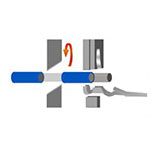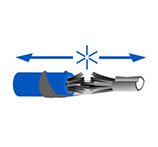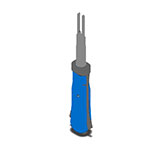Coaxial Cable: Principles, Applications, Advantages and Limitations
A coaxial cable (CoaxialCable) is a cable that has two concentric conductors, and the conductors and shield share the same axis. The most common coaxial cable consists of copper wire conductors isolated by insulation material, in the inner layer of insulation material is another layer of ring conductor and its insulator, and then the whole cable by the PVC or Teflon material sheath.

A coaxial cable working principle:
Coaxial cable is divided into four layers from the inside out: the center copper wire (single stranded solid wire or multi-stranded stranded wire), plastic insulator, mesh conductive layer and wire sheath. The center copper wire and mesh conductive layer to form the current loop. Because the center copper wire and mesh conductive layer for coaxial relationship and so named.
Coaxial cables conduct alternating current rather than direct current, which means that the direction of the current is reversed several times per second.
If a normal wire is used to transmit high-frequency currents, this wire would be the equivalent of an antenna transmitting a radio outward, an effect that depletes the power of the signal and reduces the strength of the received signal.
Coaxial cables are designed to solve this problem. The radio emitted from the center wire is isolated by a mesh conductive layer that can be grounded to control the emitted radio.
The problem with coaxial cables is that if a section of the cable is crushed or twisted, the distance between the center wire and the mesh is not always the same, which can cause the internal radio waves to be reflected back to the source. This effect reduces the power of the signal that can be received. To overcome this problem, a plastic insulator is added between the center wire and the conductive mesh layer to ensure a consistent distance between them. This also results in a cable that is relatively stiff and not easily bendable.
The way coaxial cables are categorized:
Coaxial cable can be divided into two basic types, baseband coaxial cable and broadband coaxial cable. Currently the baseband is commonly used cable, its shield is made of copper made of mesh, the characteristic impedance of 50 (such as RG-8, RG-58, etc.); broadband coaxial cable commonly used cable shield is usually stamped with aluminum, the characteristic impedance of 75 (such as RG-59, etc.).
Coaxial cable can be divided into: coarse coaxial cable and fine coaxial cable according to its diameter size. Coarse cable is suitable for relatively large local networks, it is a long standard distance, high reliability, because the installation does not need to cut the cable, so you can flexibly adjust the computer into the network location as needed, but the coarse cable network must be installed transceiver cables, the installation is difficult, so the overall cost is high. On the contrary, thin cable installation is relatively simple, low cost, but because of the installation process to cut the cable, the two ends must be installed on the basic network connector (BNC), and then connected to the ends of the T-type connector, so when the joints are more likely to produce bad potential problems, which is currently in operation, one of the most common failures that occur in the Ethernet.
Both thick and thin cables are bus topologies, i.e., multiple machines are connected to a single cable. This topology is suitable for machine-intensive environments, but when a contact fails, the fault will cascade to affect all machines on the entire cable. Failure diagnosis and repair are troublesome, therefore, will gradually be replaced by unshielded twisted pair or fiber optic cable.

Coaxial cable is widely used
1.power system
Power systems using wire and cable products are mainly overhead bare wire, busbar (bus), power cables (plastic cables, oil-paper power cables (basically replaced by plastic power cables), rubber-coated cables, overhead insulated cables), branch cables (instead of part of the bus), electromagnetic wire and electrical equipment for power equipment wire and cable and so on.
2.information transmission
Wire and cable used for information transmission systems are mainly telephone cables, television cables, electronic cables, radio frequency cables, fiber optic cables, data cables, electromagnetic lines, power communication or other composite cables.
3.instrumentation system
This part in addition to overhead bare wire almost all other products are applied, but mainly power cables, electromagnetic lines, data cables, instrumentation cables and so on.
Installation method:
Coaxial cable is generally installed between equipment and equipment. A connector is equipped at each user location to provide an interface for the user. The installation method of the interface is as follows:
(1) Thin cable, cut off the thin cable, install the BNC head at both ends, and then connect it to both ends of the T-type connector.
(2) thick cable, thick cable is generally installed using a clipboard-like Tap device, which uses the Tap on the guide pin to penetrate the cable insulation, directly connected to the conductor. Terminators are provided at both ends of the cable to weaken the reflection of the signal.
Advantages of coaxial cable
1.low Signal Loss
Coaxial cable signal loss rate is low, even if the long distance transmission, but also to maintain the strength and stability of the signal. So it has a great advantage in the cable TV network, long-distance data transmission and other fields, can provide users with stable and reliable signal service.
2.high bandwidth characteristics
Coaxial cable has high bandwidth characteristics, which means that it can quickly and efficiently transmit large amounts of data. Whether it is high-definition video, large file transfer or high-speed network connection, coaxial cable can meet.
3.high interference immunity
The shielding layer of coaxial cable is designed to provide excellent anti-interference capability, which can effectively resist external electromagnetic interference, such as radio wave interference and power line interference. This anti-interference performance makes it in the electromagnetic environment of complex places, such as factories, substations, etc., can still be stable signal transmission, to ensure the reliability of communication.
4.easy installation and durability
Coaxial cable is easy to install, does not require special specialized skills and complex tools, ordinary users can also be installed. Moreover, it has high durability, the outer sheath can protect the internal structure, reduce the damage caused by external forces, environmental factors, etc., and reduce maintenance costs.


The limitations of coaxial cable
1. limited transmission distance
Coaxial cable signal loss is low, but its transmission distance will be limited. As the transmission distance increases, the signal will gradually attenuate, when more than a certain distance, the signal quality will be significantly reduced, can not be used normally. Different types and quality of coaxial cable, its effective transmission distance will be different, in the actual application of the need to choose the appropriate cable according to the specific circumstances.
2.relatively high cost
The manufacturing process of coaxial cable is complicated and requires the use of more materials, especially the metal material of the shielding layer, so the production cost goes up.
3. Less flexible
Coaxial cables are not as flexible as twisted pair cables, and cannot withstand tangling, pressure and severe bending during installation, all of which can damage the cable structure and prevent signal transmission
4.large size
The diameter of the thin cable will be 3/8 inch thick, to take up a lot of space in the cable ducts, which is more of a problem in some of the places with strict space requirements for cabling, such as narrow wireways inside buildings, inside electronic equipment, and so on. Larger sizes not only increase the difficulty of wiring, but may also affect the overall aesthetics of the layout.
With its unique structural design, coaxial cable is widely used in many fields. However, it also has limitations. In the actual application, we have to choose the most suitable cable according to the specific needs and scenarios, based on the advantages and disadvantages of coaxial cable, to ensure the efficient and stable operation of the communication system. With the continuous development of technology, coaxial cable is also improving and innovating, and can play a role in more fields in the future.
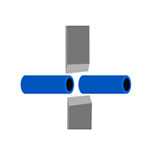 EC-6100 Automatic Heat Shrink Tube Cutting Machine EC-6800 Automatic Cutting Machine EC-6100H Automatic Hot Cutting Machine EC-830 Corrugated Tube Cutting Machine EC-6500 Automatic Cable and Tube Cutting Machine EC-810 Automatic Cable Cutting Machine EC-850X Automatic Rotary Cutting Machine EC-821 Corrugated Tube Cutting Machine EC-890 Multifunctional Automatic Cutting Machine EC-816 Automatic Cutting Machine EC-823 High Speed Cutting Machine EC-805 Automatic Cable Cutting Machine EC-860 Corrugated Tube Cutting Machine EC-830F Automatic Tube Cutting Machine With Feeding System EC-830FS Tube Cutting Machine With Feeding System EC-3100 Automatic Cable and Tube Cutting Machine
EC-6100 Automatic Heat Shrink Tube Cutting Machine EC-6800 Automatic Cutting Machine EC-6100H Automatic Hot Cutting Machine EC-830 Corrugated Tube Cutting Machine EC-6500 Automatic Cable and Tube Cutting Machine EC-810 Automatic Cable Cutting Machine EC-850X Automatic Rotary Cutting Machine EC-821 Corrugated Tube Cutting Machine EC-890 Multifunctional Automatic Cutting Machine EC-816 Automatic Cutting Machine EC-823 High Speed Cutting Machine EC-805 Automatic Cable Cutting Machine EC-860 Corrugated Tube Cutting Machine EC-830F Automatic Tube Cutting Machine With Feeding System EC-830FS Tube Cutting Machine With Feeding System EC-3100 Automatic Cable and Tube Cutting Machine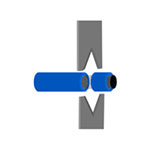 UniStrip 2016 Pneumatic Wire Stripping Machine UniStrip 2018E Electric Cable Wire Stripping Machine CS-5507 Automatic coaxial cable stripping machine CS-5515 Automatic coaxial cable stripping machine CS-400 Braided Shield Cable Stripping Machine CS Series Rotary Cable Stripping Machine CS-2486 Coaxial Cable Wire Stripping Machine CS-9580 Automatic Coaxial Cable Stripping Machine CS-9680 Automatic Coaxial Cable Stripping Machine
UniStrip 2016 Pneumatic Wire Stripping Machine UniStrip 2018E Electric Cable Wire Stripping Machine CS-5507 Automatic coaxial cable stripping machine CS-5515 Automatic coaxial cable stripping machine CS-400 Braided Shield Cable Stripping Machine CS Series Rotary Cable Stripping Machine CS-2486 Coaxial Cable Wire Stripping Machine CS-9580 Automatic Coaxial Cable Stripping Machine CS-9680 Automatic Coaxial Cable Stripping Machine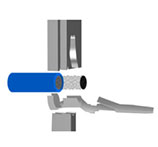 TM-20 Terminal Crimping Machine TM-20S Automatic Wire Terminal Crimping Machine TM-200 Terminal Crimping Machine TM-E140 Pre-insulation Ferrule Terminal Strip And Crimp Machine TM-E140S Automatic Wire Stripping Ferrule Crimping Machine TM-E116 Electrical Terminal Crimping Machine TM-P120 Pneumatic Terminal Crimping Machine SAT-AS6P Pneumatic Crimping Applicator SAT-MS6 Mechanical Crimping Applicator Side Feed Terminal Crimping Applicator Rear Feed Terminal Crimping Applicator Flag Terminal Crimping Applicator Crimp Applicator for Insulated Terminals TM Series Intelligent Servo Terminal Crimping Machine SAT-MS5 OTP Mechanical Applicator TM-25M Automatic Terminal Crimping Machine TM-FK40 Terminal Crimping Machine TM-CS6 Ultra Silent Copper Belt Crimping Machine
TM-20 Terminal Crimping Machine TM-20S Automatic Wire Terminal Crimping Machine TM-200 Terminal Crimping Machine TM-E140 Pre-insulation Ferrule Terminal Strip And Crimp Machine TM-E140S Automatic Wire Stripping Ferrule Crimping Machine TM-E116 Electrical Terminal Crimping Machine TM-P120 Pneumatic Terminal Crimping Machine SAT-AS6P Pneumatic Crimping Applicator SAT-MS6 Mechanical Crimping Applicator Side Feed Terminal Crimping Applicator Rear Feed Terminal Crimping Applicator Flag Terminal Crimping Applicator Crimp Applicator for Insulated Terminals TM Series Intelligent Servo Terminal Crimping Machine SAT-MS5 OTP Mechanical Applicator TM-25M Automatic Terminal Crimping Machine TM-FK40 Terminal Crimping Machine TM-CS6 Ultra Silent Copper Belt Crimping Machine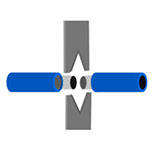 ESC-BX4 Wire Cutting And Stripping Machine ESC-BX30 Automatic Large Cable Cutting and Stripping Machine ESC-BX30S Sheathed Cable Automatic Cutting and Stripping Machine ESC-BXSNY Automatic Rotary Cable Stripping Machine ESC-BX6 Wire Cutting And Stripping Machine ESC-BX7 Wire Cutting And Stripping Machine ESC-BX8S Sheath Cable Cutting and Stripping Machine ESC-BX8PR Wire Cutting And Stripping Machine ESC-BX9 Automatic Cut and Strip Machine ESC-BX30SC Automatic Cable Wire Cutting and Stripping Machine ESC-BX120 Automatic Cutting and Stripping Machine ESC-BX35R Multi-function Rotary Cable Stripping Machine ESC-BX120S Multi-core Cable Cutting and Stripping Machine ESC-BX60 Automatic Cable Cutting and Stripping Machine ESC-BX300 Automatic Cable Wire Cutting And Stripping Machine ESC-BX16 Wire Cutting Stripping Machine ESC-BX20SF Flat Twin Wire Cutting and Stripping Machine ESC-BZ06 Wire Cutting Stripping and Bending Machine ESC-BZ16 Automatic Cutting Stripping and Bending Machine ESC-BX80S Automatic Cutting and Stripping Machine
ESC-BX4 Wire Cutting And Stripping Machine ESC-BX30 Automatic Large Cable Cutting and Stripping Machine ESC-BX30S Sheathed Cable Automatic Cutting and Stripping Machine ESC-BXSNY Automatic Rotary Cable Stripping Machine ESC-BX6 Wire Cutting And Stripping Machine ESC-BX7 Wire Cutting And Stripping Machine ESC-BX8S Sheath Cable Cutting and Stripping Machine ESC-BX8PR Wire Cutting And Stripping Machine ESC-BX9 Automatic Cut and Strip Machine ESC-BX30SC Automatic Cable Wire Cutting and Stripping Machine ESC-BX120 Automatic Cutting and Stripping Machine ESC-BX35R Multi-function Rotary Cable Stripping Machine ESC-BX120S Multi-core Cable Cutting and Stripping Machine ESC-BX60 Automatic Cable Cutting and Stripping Machine ESC-BX300 Automatic Cable Wire Cutting And Stripping Machine ESC-BX16 Wire Cutting Stripping Machine ESC-BX20SF Flat Twin Wire Cutting and Stripping Machine ESC-BZ06 Wire Cutting Stripping and Bending Machine ESC-BZ16 Automatic Cutting Stripping and Bending Machine ESC-BX80S Automatic Cutting and Stripping Machine TM-200SC Automatic Strip and Weather Pack Terminal Crimp Machine TM-20SCM Automatic Cable Stripping and Crimping Machine TM-80SCS Servo Stripping and Crimping Machine TM-30SC Stripping and Crimping Machine TM-15SCE Electrical Stripping and Crimping Machine TM-20SCS Servo Stripping and Crimping Machine TM-15SC Stripping and Crimping Machine TM-E140 Pre-insulation Ferrule Terminal Strip And Crimp Machine
TM-200SC Automatic Strip and Weather Pack Terminal Crimp Machine TM-20SCM Automatic Cable Stripping and Crimping Machine TM-80SCS Servo Stripping and Crimping Machine TM-30SC Stripping and Crimping Machine TM-15SCE Electrical Stripping and Crimping Machine TM-20SCS Servo Stripping and Crimping Machine TM-15SC Stripping and Crimping Machine TM-E140 Pre-insulation Ferrule Terminal Strip And Crimp Machine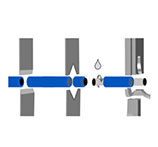 ACC-101 Automatic Single-head Terminal Crimping Machine ACC-102A Fully Automatic Terminal Crimping Machine (Both Ends) ACC-102B Automatic Double Terminal Crimping Machine ACC-105 Fully Automatic Single-head End-dipping Tin Machine ACC-106 Fully Automatic 5-Wire Single-head End-dipping Tin Machine ACC-308 (Both ends) Full automatic Soldering machine ACC-208 Fully Automatic Crimping Machine (Both Ends) ACC-508 Fully Automatic Twisting, Soldering and Crimping Machine ACC-608 Fully Automatic Flat Cable Cut Strip and Crimp Machine
ACC-101 Automatic Single-head Terminal Crimping Machine ACC-102A Fully Automatic Terminal Crimping Machine (Both Ends) ACC-102B Automatic Double Terminal Crimping Machine ACC-105 Fully Automatic Single-head End-dipping Tin Machine ACC-106 Fully Automatic 5-Wire Single-head End-dipping Tin Machine ACC-308 (Both ends) Full automatic Soldering machine ACC-208 Fully Automatic Crimping Machine (Both Ends) ACC-508 Fully Automatic Twisting, Soldering and Crimping Machine ACC-608 Fully Automatic Flat Cable Cut Strip and Crimp Machine HSM-60 Heat Shrink Tube Processing Machine HSM-70 Heat Shrink Tube Processing Machine HSM-80B Heat Shrink Tube Processing Machine HSM-90 Heat Shrink Tube Processing Machine HSM-25M Heat Shrink Tube Processing Machine HSM-120 Heat Shrink Tube Heating Machine HSM-50 Heat Shrink Tube Processing Machine HSM-160 Heat Shrink Tube Processing Machine HSM-80A Heat Shrink Tube Heating Machine HSM-260E Enclosed Heat Shrink Tube Processing Machine HSM-260O Open Heat Shrink Tube Processing Machine HSM-20 Intelligent Heat Shrink Tube Processing Machine
HSM-60 Heat Shrink Tube Processing Machine HSM-70 Heat Shrink Tube Processing Machine HSM-80B Heat Shrink Tube Processing Machine HSM-90 Heat Shrink Tube Processing Machine HSM-25M Heat Shrink Tube Processing Machine HSM-120 Heat Shrink Tube Heating Machine HSM-50 Heat Shrink Tube Processing Machine HSM-160 Heat Shrink Tube Processing Machine HSM-80A Heat Shrink Tube Heating Machine HSM-260E Enclosed Heat Shrink Tube Processing Machine HSM-260O Open Heat Shrink Tube Processing Machine HSM-20 Intelligent Heat Shrink Tube Processing Machine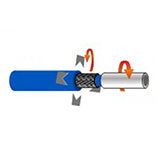 HV-CS 9070 High-Voltage Cable Shield Cutting Machine HV-FS 9053 Cable Shield Folding Machine HV-ACS 9100 Cable Shield Processing Machine HV-ACS 9200 Automatic Cable Shield Processing System HV-ACS 9300 Automotive High Voltage Cable Processing Machine HV-ACS 9500 High Voltage Cable Processing Machine HV-FC 9312 Aluminum Foil Cutting Machine HV-CS 9120 Cable Stripping Machine
HV-CS 9070 High-Voltage Cable Shield Cutting Machine HV-FS 9053 Cable Shield Folding Machine HV-ACS 9100 Cable Shield Processing Machine HV-ACS 9200 Automatic Cable Shield Processing System HV-ACS 9300 Automotive High Voltage Cable Processing Machine HV-ACS 9500 High Voltage Cable Processing Machine HV-FC 9312 Aluminum Foil Cutting Machine HV-CS 9120 Cable Stripping Machine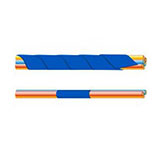 STB-10 Automatic Tape Bundling Machine STB-30 Automatic Tape Bundling Machine STB-50 Desktop Bundling Machine STB-60 Adhesive Tape Bundling Machine STB-55 Desktop Tape Bundling Machine STB-50C Automatic Tape Cutting Machine STP-B Hand-held Taping Machine STP-F Hand-held Lithium Battery Tape Wrapping Machine STP-C Automatic Wire Taping Machine STP-D Automatic Tape Wrapping Machine STP-AS Automatic Tape bundling Machine STB-55S Desktop Bundling Machine
STB-10 Automatic Tape Bundling Machine STB-30 Automatic Tape Bundling Machine STB-50 Desktop Bundling Machine STB-60 Adhesive Tape Bundling Machine STB-55 Desktop Tape Bundling Machine STB-50C Automatic Tape Cutting Machine STP-B Hand-held Taping Machine STP-F Hand-held Lithium Battery Tape Wrapping Machine STP-C Automatic Wire Taping Machine STP-D Automatic Tape Wrapping Machine STP-AS Automatic Tape bundling Machine STB-55S Desktop Bundling Machine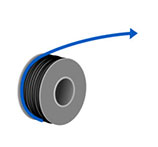 CB-B15MCS Automatic Wiring Winding Machine CB-B15MCST Automatic Wiring Winding Binding Machine CB-F30/150MCS Automatic Wiring Winding Machine CB-F30/150MCST18-45 Automatic Wiring Winding Binding Machine CB-F30/150MCST40-80 Automatic Wiring Winding Binding Machine CB-B15CST Automatic Wiring Coiling Binding Machine CB-F500MCS Automatic Wiring Winding Machine CB-B30/150CS Automatic Wiring Winding Machine CB-B10/15CS Automatic Wiring Winding Machine CB-WT630 Automatic Wire Winding and Tying Machine
CB-B15MCS Automatic Wiring Winding Machine CB-B15MCST Automatic Wiring Winding Binding Machine CB-F30/150MCS Automatic Wiring Winding Machine CB-F30/150MCST18-45 Automatic Wiring Winding Binding Machine CB-F30/150MCST40-80 Automatic Wiring Winding Binding Machine CB-B15CST Automatic Wiring Coiling Binding Machine CB-F500MCS Automatic Wiring Winding Machine CB-B30/150CS Automatic Wiring Winding Machine CB-B10/15CS Automatic Wiring Winding Machine CB-WT630 Automatic Wire Winding and Tying Machine PF-08 Automatic Wire Prefeeder PF-30 Automatic Prefeeding Machine PF-60 Automatic Prefeeding Machine PF-150 Automatic Wire Prefeeding Machine CC-380 Cable Coiling Machine CC-680 Automatic Cable Coiling Machine CC-380D Cable Coil Machine PF-120 Large Automatic Wire Prefeeding Machine PF-90 Automatic Wire Prefeeder PF-100 Automatic Prefeeder PF-04 Automatic Wire Prefeeder PF-06 Automatic Wire Prefeeder PF-05 Automatic Wire Prefeeder
PF-08 Automatic Wire Prefeeder PF-30 Automatic Prefeeding Machine PF-60 Automatic Prefeeding Machine PF-150 Automatic Wire Prefeeding Machine CC-380 Cable Coiling Machine CC-680 Automatic Cable Coiling Machine CC-380D Cable Coil Machine PF-120 Large Automatic Wire Prefeeding Machine PF-90 Automatic Wire Prefeeder PF-100 Automatic Prefeeder PF-04 Automatic Wire Prefeeder PF-06 Automatic Wire Prefeeder PF-05 Automatic Wire Prefeeder